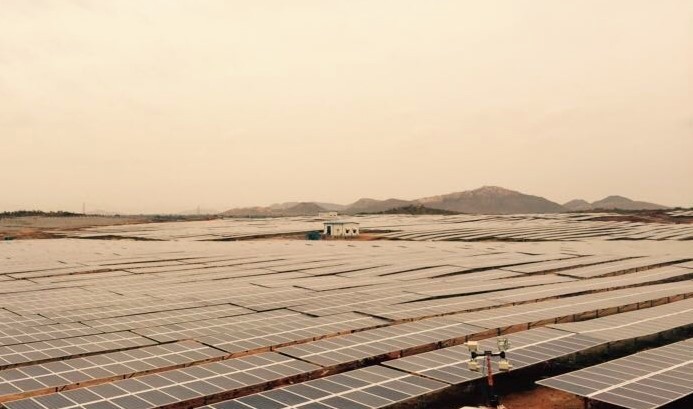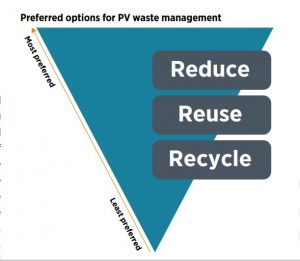
February 2018, the installed capacity of solar power reached 20 GW. Targeted capacity of solar PV installation by 2022 is 100 GW, of which 60 GW will be large utility scale based and 40 GW is rooftop solar. The growth of solar power in India is right on track and expected to achieve the target and more. Considering the solar capacity in 2009 was around 10 MW, this is huge growth rate. Since Indian installation of solar panels are still at their tiny tot age, compared with that of other countries especially developed countries who pioneered in solar power, it is too early to think of the end of life scenario of the panels, for us!
Average lifespan of solar panels in general is 30 years, and it is assumed that by 2030, world will have to deal with a considerable amount of waste out of discarded panels. In fact around 2050, solar waste will be around 10% of global e waste (IRENA, 2015). The study shows that in both a regular loss scenario and early loss scenario, by 2030, India will produce 4th highest solar waste volume, following China, US and japan.
When countries like India, which are still evolving in their renewable policy framework, having regulations for disposal of solar waste is a far cry. Even countries like US or Japan do not have solar waste under special category, and include them only in general electronic waste category. Only European Union have special regulation in place for solar waste. the EU Waste Electrical and Electronic Equipment (WEEE) Directive requires all producers supplying PV panels to the EU market (wherever they may be based) to finance the costs of collecting and recycling end-of-life PV panels put on the market in Europe (IRENA, 2015).
If we are thinking that world has reached quite a saturation regarding R&D on solar, the end of life and disposal related issues open a new avenue for research on solar PV.

The three main means of dealing with end life of solar panels in a constructive manner are Reduce, Reuse and Recycle. Studies propose more research work towards reducing the use of hazardous and rare materials in making the panels. Also, as panels capacity decreases with time, options to repair the existing one and use those in stead of replacing with new ones need to be explored. Promoting recycling of panel material is the third method of end life management for solar panels.
Thus, the solar panel waste has possibilities of turning into valuable asset even at the end of panel’s life, with proper end of life management in place.
As a country, joining the solar bandwagon later than others, and attaining a significant position already in global solar capacity map, India has the advantage of learning from the experience and planning ahead. Things India needs to do is first have a policy and regulation specific to solar PV in place. The objective will be to achieve sustainable management of end of life for solar PV panels through an enabling regulatory framework along with institutions to implement the regulations.
Also, it will be required to expand the waste management infrastructure, especially e waste, to include solar waste. Other than this, coordination between energy and waste sector, which is not very established in India yet, need to be strengthened, along with which encouraging and promoting innovation for three Rs mentioned above need to be part of the policy.
To make solar really the green power, the management of solar waste in a sustainable manner with long term policies and short term measures need to be considered.
